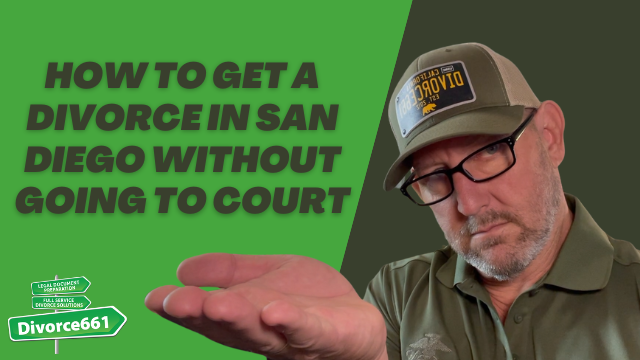How to Prepare Divorce Documents for Alameda County Court
Hi, I’m Tim Blankenship from Divorce661. If you’re starting a divorce in Alameda County, this guide will walk you through the paperwork steps you need to get your case accepted and moving without needless delays. The forms themselves are statewide, but Alameda County has strict local procedures—and the single biggest change to keep top-of-mind is e-filing. Below I explain what to prepare, common mistakes to avoid, and how to get your case accepted fast.
Why Alameda County’s e-filing rule matters
Alameda County requires that all divorce documents be filed electronically. That means:
- Hand-delivered or mailed paperwork is no longer accepted.
- You must create, format, and upload your documents through an approved e-filing system.
- Minor formatting errors, missing signatures, or unchecked boxes can cause a rejection.
Bottom line: Preparing the correct forms isn’t enough—you must prepare and format them to meet Alameda County’s e-filing requirements.
Essential initial forms to start your case
When you begin a divorce in Alameda County, you’ll typically start with the following documents:
- Petition (Form FL-100) – This is the document that opens your case and states the relief you seek.
- Summons (Form FL-110) – Notifies the other party about the divorce and their rights/responsibilities.
- UCCJEA (Uniform Child Custody Jurisdiction and Enforcement Act) – Required if you and your spouse have children. This form establishes jurisdiction and must be completed carefully.
All of these forms must be completed thoroughly. Missing a checkbox or forgetting a signature is one of the most common reasons the court rejects a filing.
Service of process: what comes next
After you file the initial documents, you must serve the other party with the Petition and Summons according to California service rules. Service is a step the court requires before your case proceeds.
Preliminary financial disclosures — required in every case
Alameda County (and the state) requires financial transparency early in the process. You will need to complete and exchange these disclosures with your spouse:
- Income and Expense Declaration (Form FL-150) – Shows monthly income and household expenses.
- Schedule of Assets and Debts (Form FL-142) – Lists property, bank accounts, debts, and other financial items.
The court will not approve your final judgment without completed preliminary disclosures. Treat them as mandatory, not optional.
Common mistakes that lead to rejection
- Incorrect formatting for e-filing systems (margins, fonts, blank pages).
- Missing signatures, dates, or initials where required.
- Unanswered checkboxes or incomplete fields on mandatory forms.
- Failing to include the UCCJEA when children are involved.
- Attempting to hand-deliver or mail filings when the county requires electronic submission.
Missing even one checkbox or forgetting a signature can result in the court rejecting your filing.
Real client example: Why expert help matters
We recently helped a couple who tried to file their own petition in Alameda County. Their filing was rejected twice due to formatting issues and uncertainty about what the court required. After we reviewed and corrected their forms and e-filed properly, the court accepted the case and it was moving forward in less than 48 hours.
That’s the difference between guessing at the rules and having someone who knows Alameda County procedures handle the details.
How Divorce661 handles your Alameda County filing
At Divorce661 we specialize in preparing and electronically filing divorce documents specifically for Alameda County. Our approach:
- Review and prepare all required initial forms (petition, summons, UCCJEA when applicable).
- Format documents to meet Alameda County’s e-filing specifications.
- File electronically through an approved e-filing provider so the court accepts your case.
- Prepare and exchange required preliminary financial disclosures to keep your case on track.
We offer flat-fee pricing, 100% online filing, and a free consultation to walk you through the process.
Next steps and final tips
- Start by gathering basic information: names, addresses, dates, and financial records.
- Complete the petition, summons, and UCCJEA (if you have children) carefully—don’t skip checkboxes or signatures.
- Format and submit your documents via an approved e-filing system—mail or hand delivery won’t work in Alameda County.
- Serve your spouse properly and prepare your preliminary financial disclosures (FL-150 and FL-142).
- If you’re unsure or your filing is rejected, get help early to avoid repeated delays.
If you want help preparing your Alameda County divorce documents correctly and getting through the court system quickly, visit divorce661.com to schedule a free consultation. We’ll take care of the paperwork so you can move forward with confidence.
Contact
Divorce661 — Schedule a free consultation at divorce661.com







